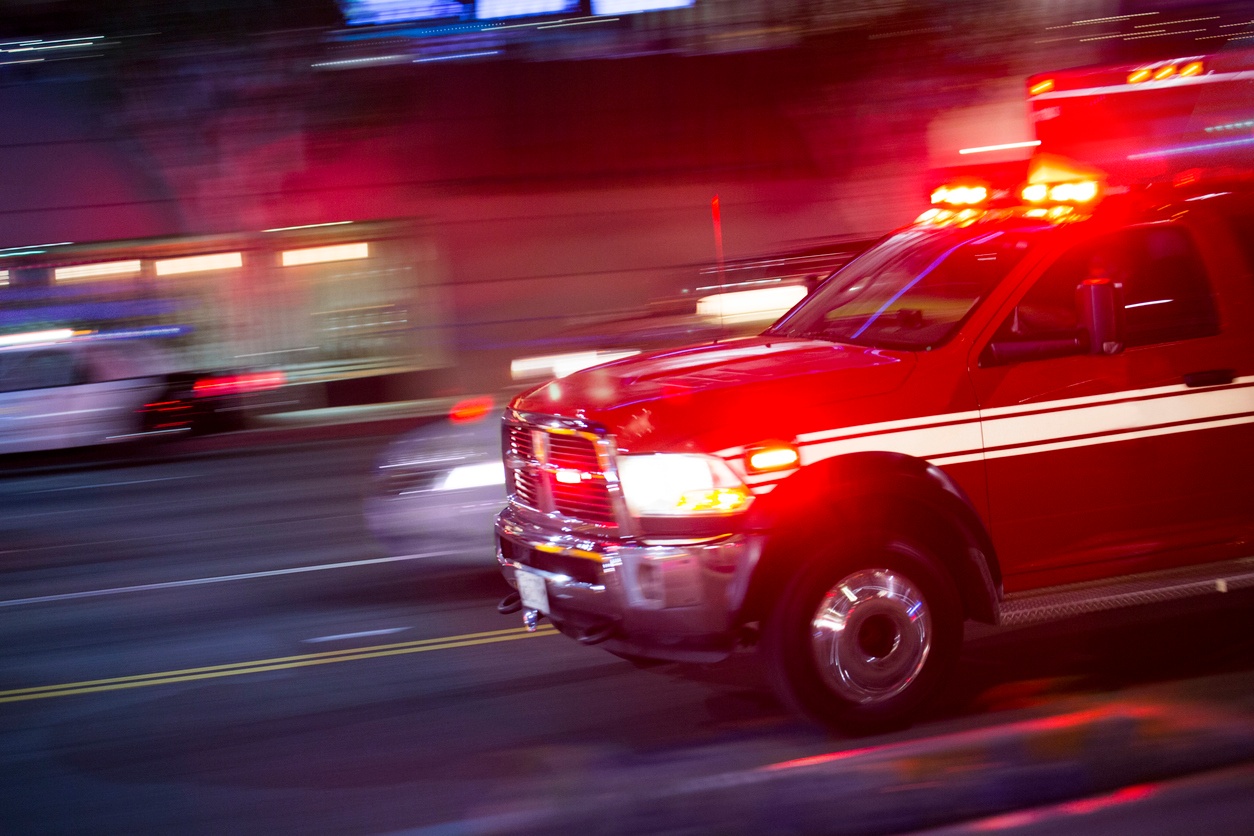
Katy Mogg, who was Tradeshow Coordinator in 2018, had the privilege of tagging along to observe the Ross/West View EMS Division on one of their quarterly training weekends. During the exercise, she learned what it takes for an educator to create teachable moments in the midst of simulated chaos. Below are a few tips for making a mock disaster drill look and feel like the real thing.
1. Location, location, location!
If you’re able, plan to execute your mock emergency at an off-site location. Choose a place that’s open but unfamiliar to your participants. A key factor to a good practice scenario is the element of surprise. Participants should come in unaware of the setup in order for the training to closely mimic a real emergency scene.
The mock emergency drill Katy observed was staged in an abandoned building that’s now used by different emergency departments for training purposes. Participants weren’t informed of the location and type of drill until the night before the exercise, and the scenario details weren't shared until the moment they arrived on-site.
.jpg?width=800&height=449&name=RossActiveShooter%20(1).jpg) |
| Two Ross/West View EMS trainees coordinate efforts to "save" a victim in a mass casualty incident. They need to assess the patient in the field and ignore distractions. Photo credit: Pierce Media |
2. Set the Scene
EMTs often find themselves in unpredictable situations. It’s important to recreate this feeling of uncertainty in your mock disaster scenarios, too, so participants can test their ability to perform under extreme pressure. Once you’ve chosen a location for your mock disaster, consider adding external factors to the exercise, like powerful sights and sounds. Incorporating these elements into your own training scenario has a real and combative effect in an emergency situation.
During the mock disaster training, the educators and administrators used sensory deprivation techniques to create a disorienting environment for participants. Strobe lights, a soundtrack of pre-recorded screams, and a Dropkick Murphys album played at full blast were among a few of the elements used to simulate distraction and chaos during the practice scenario.
3. Quality Materials Matter... for realism
The more realistic your scenario is, the more your participants can learn from it. This applies to the quality of the supplies used within the teaching exercise as well. Be resourceful when setting up your scenario and consider asking other local emergency departments to loan out what you don’t already have.
Though several different manikins were used in our mock emergency drill, the Ross/West View training staff was lucky enough to borrow one manikin in particular that was extremely comprehensive. This manikin had the ability to simulate breathing, movement and even bleeding. For the participants of the scenario, the quality of the manikin made the exercise that much more realistic. It also cut down on the set-up time for the scenario administrators, since the other manikins had to be prepped with Moulage before the scenario.
.jpg?width=800&height=533&name=RossActiveShooter%20(3).jpg) |
| Photo credit: Pierce Media |
4. Quality Materials Matter... for efficiency
It takes repetition and association to convert learning into long-term memory. This is especially important for EMS providers, as they are so often thrown into unfamiliar environments. When planning your own practice scenarios, incorporate training supplies that most closely resemble the tools used in an actual emergency situation. Using supplies in training that are similar to the real thing can help your technicians feel confident about performing in the field.
During the training scenario with Ross/West View, a manikin was set up in a “sensory deprivation room,” a small, enclosed area with music blasting in the background. Participants were told to correctly apply a tourniquet to the victim in the dark. In this instance, familiarity with the type of tourniquet was the key factor in the being able to successfully complete the exercise while under distress.
Teach your students the best way to apply a tourniquet, and give them all the emergency medical solutions they need in one bag.






